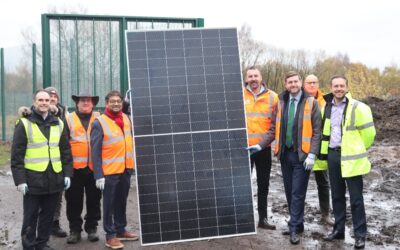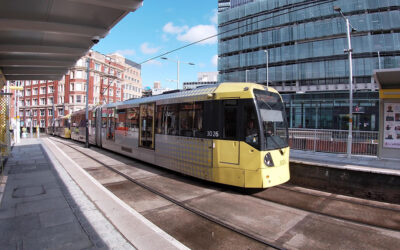
A two-megawatt solar farm has been connected to the national grid and is set to provide electricity to around 800 homes.
The 3.8-hectare site, located off Kenyon Way in Little Hulton, has 3,774 ground mounted solar panels and is set to generate over 2,000 megawatt hours of electricity a year. This will be used to offset Salford City Council’s electricity bills, saving the council thousands of pounds on energy bills.
The solar farm will save over a thousand tonnes of carbon every year, which is the equivalent of taking over 600 cars off the road.
Part of a larger scheme called Unlocking Green Energy in Greater Manchester, the solar farm is part funded by the European Regional Development Fund (ERDF) and Salford City Council and is part of the drive for Salford and the rest of Greater Manchester to become carbon neutral by 2038.
The solar farm follows the installation of solar car ports at the council’s Turnpike and Swinton Hall Road depots, which provide power to the buildings on site and will further reduce the council’s electricity costs and carbon emissions.
Richard Halsey, Innovation Director at Energy Systems Catapult said: “As part of the Unlocking Clean Energy in Greater Manchester consortium alongside Salford City Council, we saw first-hand how place-based decarbonisation efforts can help us on the journey to Net Zero. After five years’ of hard work from many people, seeing this project come to fruition is an exciting moment for localised energy generation; helping deliver lower carbon emissions, and lower energy bills for the city council. Congratulations to everyone involved!”
David Oatt, Regional Manager at Vital Energi, the main contractor for both the solar farm and solar car ports said: “These projects mark a definitive step on the council’s net zero journey and demonstrate the role renewable energy can have in helping local authorities to decarbonise their estate. We’re proud to deliver both projects for Salford City Council, contributing to a cleaner, greener Greater Manchester including increasing biodiversity with planting around the site to attract wildlife to the area.”



